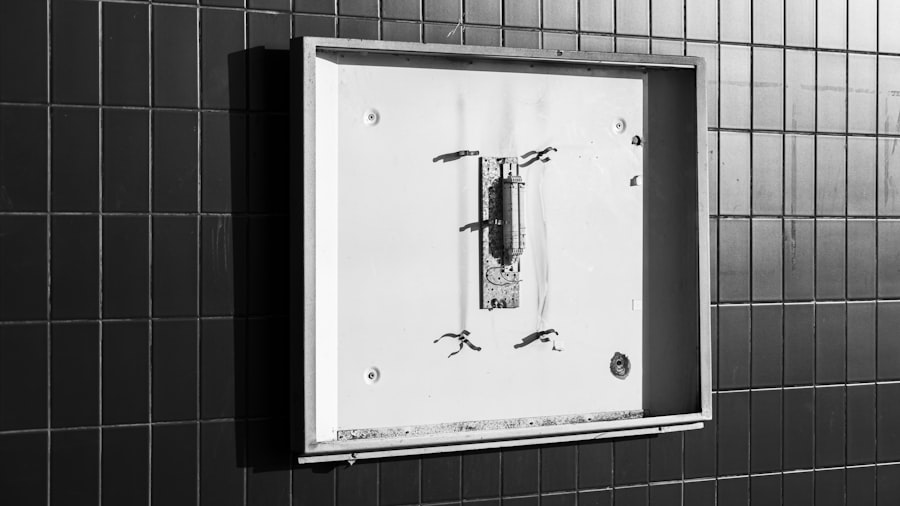In the realm of advertising, vehicle wraps have emerged as a dynamic and visually striking method to capture the attention of potential customers. These wraps transform ordinary vehicles into mobile billboards, showcasing vibrant graphics and compelling messages that can reach a diverse audience. The beauty of vehicle wraps lies in their ability to blend creativity with functionality; they not only promote a brand but also serve as a moving piece of art that can be seen by thousands of people daily.
For instance, a local coffee shop might wrap a delivery van in rich browns and creams, adorned with images of steaming cups and fresh pastries, effectively turning the vehicle into an enticing advertisement that whets the appetite of passersby. Moreover, the effectiveness of vehicle wraps is amplified by their versatility. They can be tailored to fit any type of vehicle, from cars and trucks to buses and vans, allowing businesses to choose the best option for their target demographic.
A landscaping company might opt for a wrap that features lush greenery and blooming flowers, while a tech startup could showcase sleek designs and futuristic elements. The key is to ensure that the design aligns with the brand’s identity and resonates with its audience. Additionally, vehicle wraps are often made from durable materials that withstand various weather conditions, ensuring that the advertisement remains vibrant and eye-catching over time.
This longevity makes them a cost-effective solution for businesses looking to maximize their advertising budget.
Key Takeaways
- Vehicle wraps can effectively capture attention and promote brand visibility on the move.
- Interactive social media campaigns boost engagement and foster customer interaction.
- Humorous TV commercials create memorable impressions and enhance brand recall.
- Unique business cards leave a lasting impact and differentiate your brand.
- Guerrilla marketing tactics offer unconventional ways to surprise and engage audiences.
Interactive Social Media Campaigns
In today’s digital age, social media has become an indispensable tool for businesses seeking to engage with their audience in innovative ways. Interactive social media campaigns are particularly effective in fostering a sense of community and encouraging user participation. These campaigns can take many forms, from contests and giveaways to polls and quizzes, all designed to spark conversation and interaction among followers.
For example, a clothing brand might launch a campaign inviting customers to share photos of themselves wearing the latest collection, using a specific hashtag. This not only promotes the brand but also creates a sense of belonging among customers who feel valued for their contributions. Furthermore, interactive campaigns can leverage user-generated content to enhance brand visibility.
When customers share their experiences or creations related to a brand, they become ambassadors, spreading awareness through their networks. A restaurant could encourage patrons to post pictures of their meals with a unique hashtag, offering a chance to win a free dinner for two. This strategy not only generates buzz but also provides authentic content that can be repurposed for marketing materials.
By actively engaging with followers through comments and shares, businesses can build stronger relationships with their audience, fostering loyalty and encouraging repeat visits.
Humorous and Memorable TV Commercials

Television commercials have long been a staple of advertising, but those that incorporate humor tend to stand out in viewers’ minds far more effectively than traditional ads. A well-crafted humorous commercial can evoke laughter while simultaneously delivering a brand message, creating a memorable experience for the audience. For instance, consider the iconic “Geico Gecko” commercials that use wit and charm to convey the benefits of insurance in an entertaining way.
The clever writing and relatable scenarios resonate with viewers, making them more likely to remember the brand when considering insurance options. Moreover, humor in advertising can break down barriers and make brands feel more approachable. A fast-food chain might create a series of commercials featuring quirky characters who find themselves in absurd situations while trying to enjoy their meals.
This not only entertains but also humanizes the brand, allowing consumers to connect on a personal level. The key is to strike the right balance between humor and messaging; while it’s essential to entertain, the core message should never be lost in the laughter. When done correctly, humorous commercials can lead to increased brand recall and even viral sharing on social media platforms.
Unique and Quirky Business Cards
| Business Card Type | Material | Average Thickness (mm) | Unique Feature | Estimated Lifespan (years) | Common Use Case |
|---|---|---|---|---|---|
| Wooden Cards | Wood | 1.5 | Natural texture and durability | 5-10 | Creative professionals, eco-friendly brands |
| Metal Cards | Stainless Steel | 0.8 | High durability and sleek look | 10+ | Luxury brands, tech industry |
| Transparent Plastic Cards | PVC | 0.76 | Clear or frosted design | 3-5 | Modern businesses, startups |
| Seed Paper Cards | Biodegradable Paper with Seeds | 0.3 | Plantable after use | 1-2 (usable), plants grow after | Eco-conscious brands, gardeners |
| Interactive Cards | Various (Paper, Plastic) | Varies | Includes QR codes or pop-up elements | 1-3 | Tech companies, marketing agencies |
| Embossed Cards | Thick Cardstock | 0.5 | Raised text or patterns | 3-5 | Luxury services, law firms |
In an age where digital communication dominates, the humble business card remains a powerful networking tool—especially when it stands out from the crowd. Unique and quirky business cards can leave a lasting impression on potential clients or partners, serving as a tangible reminder of a meeting or conversation. For example, a graphic designer might opt for a card shaped like a paint palette, complete with vibrant colors that reflect their artistic style.
This not only showcases their creativity but also invites recipients to engage with the card in a way that traditional rectangular cards do not. Additionally, incorporating unconventional materials or textures can elevate the impact of business cards. A tech startup might use transparent plastic or metal cards that convey innovation and modernity, while an eco-friendly company could choose recycled paper embedded with seeds that recipients can plant.
Such thoughtful design choices communicate the brand’s values and personality at first glance. Furthermore, including interactive elements—like QR codes that link to an online portfolio or video introduction—can enhance engagement and provide additional information without cluttering the card itself. In this way, unique business cards become conversation starters that facilitate networking opportunities.
Creative Billboard and Outdoor Advertising
Billboards have long been a staple of outdoor advertising, but creativity is what sets successful campaigns apart from the mundane. A well-designed billboard can capture attention in mere seconds, making it crucial for brands to think outside the box when crafting their messages. For instance, consider a billboard that features an oversized image of a mouth-watering burger alongside an actual bite taken out of it—this visual not only entices viewers but also creates curiosity about the restaurant behind it.
The strategic placement of such billboards in high-traffic areas ensures maximum visibility and impact. Moreover, creative outdoor advertising can extend beyond traditional billboards to include innovative installations that engage passersby in unexpected ways. A fitness center might create an interactive billboard that encourages people to perform exercises while waiting at a bus stop, integrating physical activity into their daily routine.
This not only promotes the gym but also fosters community engagement by encouraging healthy habits. Additionally, utilizing augmented reality (AR) technology can transform static billboards into dynamic experiences where viewers can interact with digital elements through their smartphones. Such creativity not only captures attention but also enhances brand recall by creating memorable experiences.
Engaging and Informative Website

In an increasingly digital world, a business’s website serves as its virtual storefront—making it essential for it to be engaging and informative. An effective website should not only reflect the brand’s identity but also provide visitors with valuable content that addresses their needs or interests. For example, an online retailer might feature high-quality images of products alongside detailed descriptions and customer reviews, allowing potential buyers to make informed decisions before purchasing.
This transparency builds trust and encourages conversions. Furthermore, incorporating interactive elements such as chatbots or live customer support can enhance user experience by providing immediate assistance. A travel agency’s website might include interactive maps or itinerary planners that allow users to customize their trips based on preferences and budgets.
Additionally, regularly updated blogs or resource sections can position businesses as thought leaders in their industry while providing visitors with useful information that keeps them coming back for more. By prioritizing user experience and content quality, businesses can create websites that not only attract visitors but also convert them into loyal customers.
Sponsored Community Events and Sponsorships
Sponsoring community events is an effective way for businesses to build goodwill while increasing brand visibility within their local markets. By aligning themselves with events that resonate with their target audience—such as charity runs, music festivals, or art fairs—businesses can demonstrate their commitment to community engagement while promoting their products or services. For instance, a local brewery might sponsor a music festival by providing refreshments while showcasing its craft beers through branded tents and signage.
This not only enhances the event experience but also allows attendees to associate positive memories with the brand. Moreover, sponsorships can extend beyond mere financial support; they often involve active participation in events that foster deeper connections with potential customers. A fitness studio might host free outdoor yoga classes in partnership with local parks, inviting community members to experience their offerings firsthand while promoting health and wellness.
Such initiatives create opportunities for meaningful interactions between businesses and consumers, fostering loyalty and encouraging word-of-mouth referrals. By investing in community events, businesses can cultivate relationships that extend beyond transactions, ultimately contributing to long-term success.
Unconventional Guerrilla Marketing Tactics
Guerrilla marketing is characterized by its unconventional approach to promoting products or services through creative strategies that often rely on surprise and engagement rather than traditional advertising methods. This form of marketing seeks to create memorable experiences that resonate with audiences on an emotional level. For example, a pet adoption agency might stage an elaborate flash mob in a busy park featuring people dressed as various dog breeds dancing alongside real dogs available for adoption.
This unexpected spectacle not only draws attention but also raises awareness about pet adoption in an entertaining way. Additionally, guerrilla marketing tactics often leverage public spaces creatively—turning everyday environments into platforms for brand messaging. A coffee shop could install oversized coffee cups around town filled with flowers or plants as part of an awareness campaign about sustainability and local sourcing.
Such installations invite curiosity and interaction from passersby while subtly promoting the brand’s values. The key to successful guerrilla marketing lies in its ability to surprise audiences while delivering impactful messages that encourage sharing on social media platforms—amplifying reach without significant financial investment. By thinking outside conventional advertising frameworks, businesses can create buzzworthy campaigns that leave lasting impressions on consumers.



